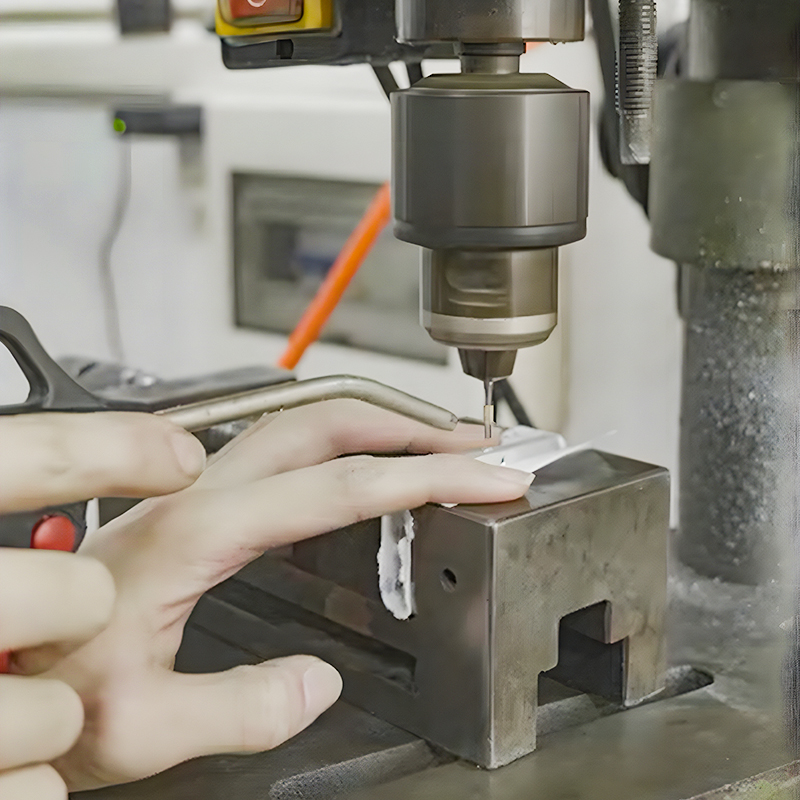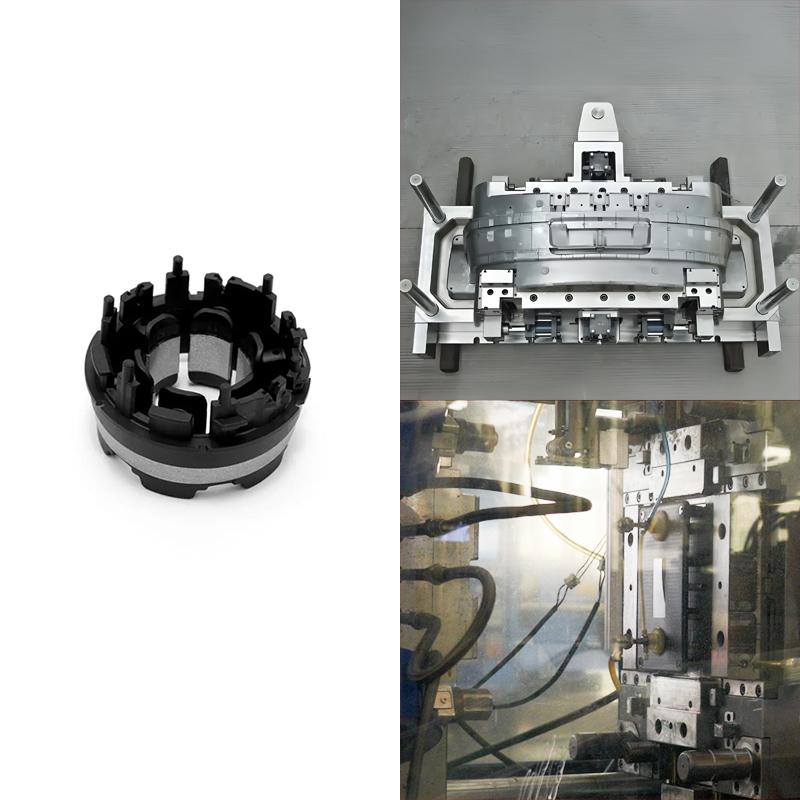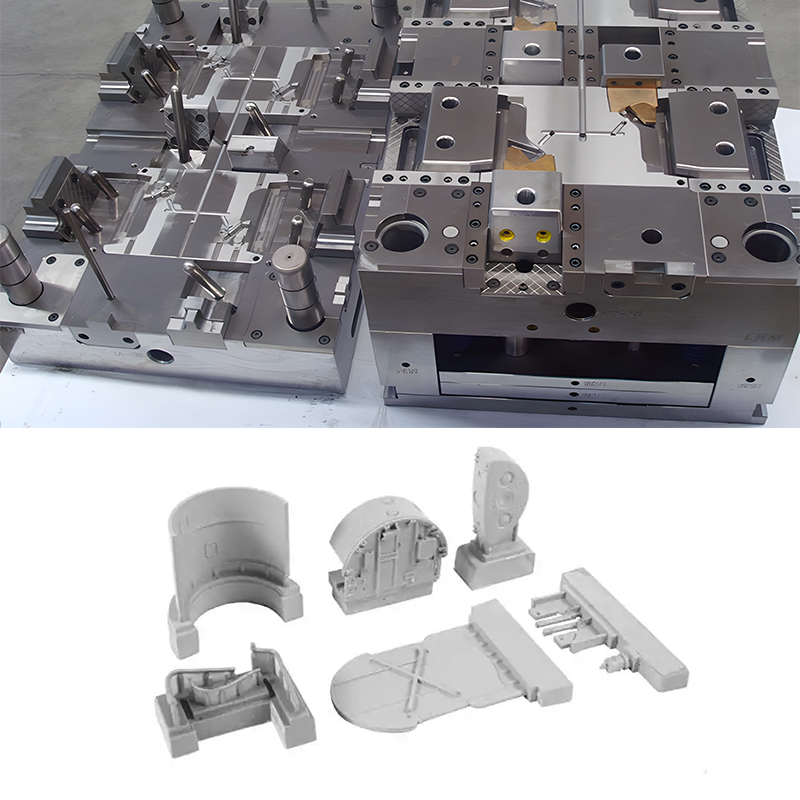Tapped holes are quite an essential component in many industrial and mechanical applications. They introduce a means of holding components together and mounting equipment to support structure and fabricate joints that can withstand tugging or intense stress.
Whether it is machinery design, automobile works, or even a self-made DIY project, getting to know the functions and advantages of tapped holes is critical for reliable and efficient results.
In this article, we will detail the processing and usage of tapped holes, outlining the benefits and explaining why, in most cases, they are preferred over other options within various applications.
Key Takeaway
- Explanation of tapped holes as threaded holes with internal threads cut into a pre-drilled hole using a tap, including the calculation for drill size.
- Overview of tapped hole standards, including Metric (ISO), Unified Thread Standard, and British Standard Whitworth, with details on sizes and thread pitches.
- Various usage of tapped holes such as fastening components, making joints, mounting equipment, installing inserts, and thread repair.
- Benefits of tapped holes include their solid connection, versatility, thread reinforcement, ease of assembly/disassembly, and cost-effectiveness.
- The difference between tapped holes and other types like self-tapping screw holes, threaded inserts, helicoils, and pre-tapped holes.
- Detailed steps in the tapping process, including hole preparation, tap selection, tool setup, lubrication, thread cutting, chip removal, and quality control.
What are Tapped Holes?
When it comes to understanding the tapped holes meaning, we can consider them to be a type of threaded hole where internal threads are bored into a pre-drilled hole; that’s drilled into the material with a diameter slightly smaller than the intended thread size.
The threads are subsequently cut from within the hole using a tool called a tap. As a result, a threaded hole (or tapped hole) is created for inserting fasteners like screws or bolts.
These holes are designed to take fasteners strongly into place and offer an effective bond between two components.
These threaded holes are particularly ideal in situations where significant forces are expected to be applied on the connection or where components will undergo repeated assembly and disassembly.
The precision and integrity provided by tapped holes make them critical in industries where reliable fastening is paramount.
Calculating the Correct Drill Size for Tapped Holes
To determine the correct drill size for a tapped hole, mainly for ANSI threads, you can use the following formula:
Drill Size = Major Diameter − 1/Number of Threads per Inch + Adjustment Factor
In this formula:
- The diameter of the threaded portion of the fastener is the major diameter.
- The number of threads that appear within a one-inch length on the fastener is the threads per inch, also known as the thread pitch. This measurement is crucial in determining the size and spacing of the threads in a tapped hole.
- The adjustment factor is typically +0.005 inches for pitches over 10 TPI (threads per inch). Otherwise, it will be 0.000 inches.
Now, if the fastener you are tapping a hole for has a major diameter of 0.750 inches with 16 threads per inch:
Drill Size = 0.750 inches − 161 inches + 0.005 inches = 0.750 inches − 0.0625 inches + 0.005 inches = 0.6925 inches
Upon calculating, you should typically choose the closest available standard drill size.
This calculation ensures that the tapped hole is neither too tight nor too loose. This creates optimal conditions for cutting threads and securing fasteners effectively.
Tapped Hole Standards
| Standard | Size | Diameter | Thread Pitch |
| Metric (ISO) | M3 | 3.00 mm | 0.50 mm |
| M4 | 4.00 mm | 0.70 mm | |
| M5 | 5.00 mm | 0.80 mm | |
| M6 | 6.00 mm | 1.00 mm | |
| Unified Thread Standard | 1/4-20 UNC | 0.250 in (6.35 mm) | 20 threads per inch |
| 3/8-16 UNC | 0.375 in (9.525 mm) | 16 threads per inch | |
| 1/2-13 UNC | 0.500 in (12.7 mm) | 13 threads per inch | |
| British Standard Whitworth | 1/4 BSW | 0.250 in (6.35 mm) | 20 threads per inch |
| 5/16 BSW | 0.3125 in (7.94 mm) | 18 threads per inch | |
| 3/8 BSW | 0.375 in (9.525 mm) | 16 threads per inch |
Uses of Tapped Holes
Tapped holes have a wide range of industrial and mechanical applications. Some of these include:
Fastening Components
The primary use of the tapped hole is to fasten components together. They largely provide the parts with a good hold, thus keeping them intact under heavyweight or vibration. This makes them ideal for uses where stability and durability are crucial.
Making Joints
Tapped holes facilitate making joints between various components. Hence, when a screw or bolt is inserted in a tapped hole, two parts or more can be joined together, and the joint is strong.
As a result, this creates the possibility of forming strong and stable joints, which become imperative in most mechanical and structural applications.
Mounting Equipment
Tapped holes are used in quite a good number of industries and are applied for mounting equipment onto surfaces.
For example, in the automotive industry, holes are tapped to mount parts such as mirrors, brackets, license plates, etc. This application helps securely attach the equipment while making it easily accessible.
Installing Inserts
Tapped holes can be fitted with threaded inserts, which not only provide a stronger thread for fastening purposes but also make it last longer.
Such inserts are especially useful when repeated fastening and unfastening of a tapped hole is needed. This feature adds greatly to improve the strength, life, and reliability of the threaded connection.
Repairing threads
Another important application of the tapped holes is in thread repair. If a threaded hole has become worn or stripped, a larger tapped hole could be drilled and a threaded insert or helicoil inserted to retain the original thread. Understanding this repair procedure can make you feel more knowledgeable and prepared for potential maintenance issues.
For example, if a threaded hole has become worn or stripped, then a larger tapped hole could be drilled and a threaded insert or helicoil inserted to retain the original thread. In that respect, such a repair procedure may further extend its life and continue to be useful.
Advantages of Tapped Holes
Now, coming to the benefits, the very fact that tapped holes provide secure and reliable connections makes them quite essential in many different sectors. Why? Let’s explore by breaking down the important benefits associated with tapped holes.
Solid Connection
Properly executed tapped holes provide a good, solid connection between parts. This strength will hold the assembled components in place and make them last longer, even under rigorous conditions.
Versatility
Tapped holes offer a remarkable degree of flexibility by accommodating various screws and bolts. This adaptability allows for the tapping of components of different dimensions, making them ideal for a wide range of uses. This versatility empowers you to handle diverse applications with ease and resourcefulness.
Thread Reinforcement
The use of threaded inserts or helicoils in tapped holes reinforces and strengthens threads. This reinforcement prolongs the life of the fastening mechanism, thereby minimizing the frequency of repairs or replacements required.
Easy Assembly and Disassembly
Tapped holes facilitate easy assembly and disassembly of components. This is particularly helpful for maintenance and repair work because adjustments or replacements are quickly made with this type of use.
Cost-Effective
Tapped holes provide a cost-effective solution to joining parts/components. As a result, it helps eliminate the use of other hardware like nuts and washers, bringing the overall cost down while maintaining effective fastening.
Comparing Different Types of Threaded Holes
Threaded holes are widely used for many mechanical and structural purposes where strong, reliable connections are required.
While we said earlier that a tapped hole is one of the more generic forms of the threaded hole, there are many other distinct forms, each intended for specific applications.
Let’s explore some such types of threaded holes below to get an idea of how a tapped hole fits into this broader category.
Tapped Holes
- As discussed earlier, tapped holes are made by first drilling a hole a little smaller in diameter than the thread size desired and then cutting internal threads using a tap. This is an ordinary method for most metalwork or high-accuracy applications.
- Tapped holes provide robust and reliable threads that can survive high forces, so they are also suitable for repeated assembly and disassembly in mechanical joints.
- These are common in many manufacturing, automotive, and aerospace applications that require accurate and reliable joints.
Self-Tapping Screw Holes
- Self-tapping screw holes create their thread when they are screwed into a material. However, tapped holes don’t have pre-cut threads; the screw does it when it is driven.
- Mostly used for convenience, these screws may not develop as much thread strength in harder materials compared to tapped holes.
- This kind of threaded hole is commonly used in softer materials, including wood, plastic, and some metals, where speed and ease are more critical than attaining maximum strength.
Threaded Inserts
- Threaded inserts are pre-fabricated threaded components that are inserted into a hole, often to reinforce a hole’s area or repair stripped threads.
- The threaded inserts can either be self-tapped or used in pre-tapped holes.
- Inserts are more appropriate for wood, plastic, and aluminum, where direct tapping does not gain sufficient strength. We can also use them in repair and maintenance work.
Helical Inserts (Helicoils)
- Helical inserts, or Helicoils, are coiled wire inserts that provide a strong thread within a tapped hole. These help strengthen threads in softer materials or repair damaged threads.
- Due to their strength, these inserts often provide more durability than the original tapped hole and are commonly used in high-stress situations.
- It is used in high-performance areas like aerospace and automotive applications, where saving weight is important without compromising thread strength.
Pre-Tapped Holes
- These are the threaded holes created during the manufacturing process of any component. Unlike standard tapped holes, these holes are pre-tapped and ready for further use.
- Similar to standard tapped holes, pre-tapped holes have large, strong, reliable threads but are still limited by material quality and manufacturing.
- They are used extensively for mass-produced components where consistency and ease of manufacturing become prime considerations.
Processing Tapped Holes: How Tapping Works?
Tapping is a precise machining process used to obtain internal threads within a previously drilled hole. To perform it professionally, you need to follow the steps below:
Hole Preparation
The first step in this regard will be to drill a slightly undersized hole as compared to the desired thread size. This provides a guiding operation to the tap that will later cut the internal threads.
Tap Selection
With different tap types available, each serves a different purpose. This includes:
- Straight Flute Taps: Ideal for through-holes where chips can easily exit.
- Spiral Flute Taps: Best for blind holes, as they direct chips out of the hole during tapping.
- Bottoming Taps: Utilized for threading near the bottom of a blind hole, with only 1-2 threads slightly tapered.
- Taper Taps: Tapered at the tip to ease alignment and starting.
Tapping Tool Setup
The tap is held either in a tool holder or a tap wrench, depending on whether it is a manual or automated operation. This is crucial for effective tap alignment so that threads of proper depth and uniformity are cut.
Lubrication and Coolant
Lubrication helps reduce friction and heat buildup, which may further improve the tap life and the quality of cut threads.
Thread Cutting
This involves rotating the tap clockwise into the hole in a material for right-hand threads, thereby cutting the material to form threads. This process is continued until it reaches the required depth.
Chip Removal
Chips generated in the threading process have to be removed to avoid clogging the threads or destroying the tap.
Quality Control and Inspection
After tapping, the threads are checked using thread gauges or other measurement tools to inspect for precision, where necessary.
Final Steps
After the inspection, the tapped hole can further be processed by deburring, cleaning, or coating to enhance performance or increase the thread life span.
Conclusion
Tapped holes offer unique benefits and are suited to different applications.
Understanding what these holes are and how they are used in the manufacturing industry is important so you can make the right decision for your manufacturing, construction, or DIY project.
With our professional team at First Mold, you can make the right choice, ensuring that your project’s success isn’t compromised in any way.




















